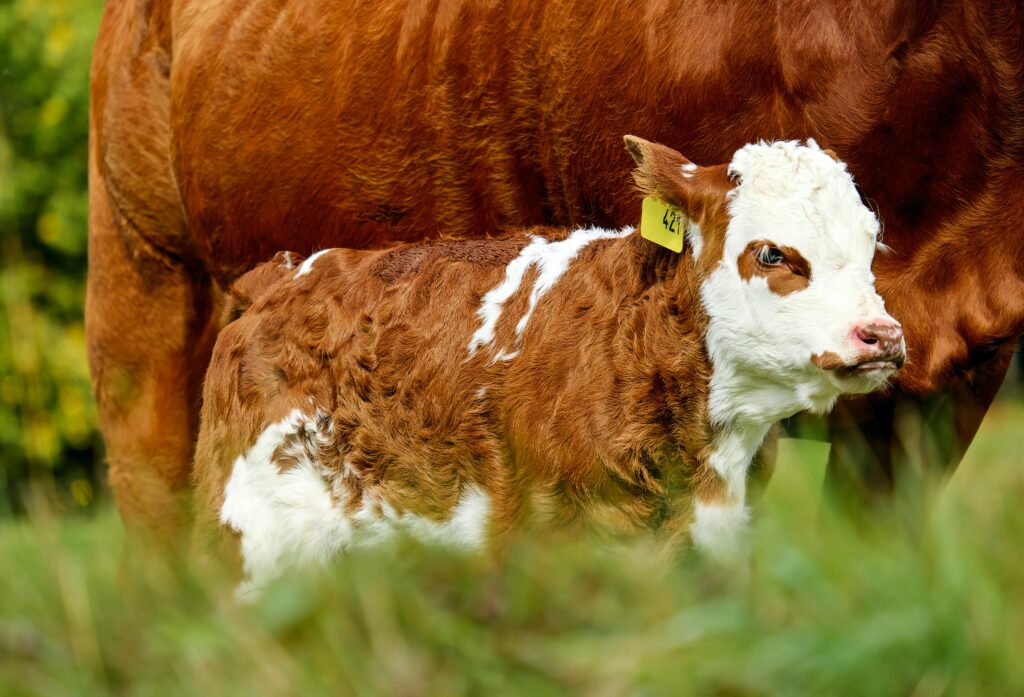In the intricate world of ruminants, a microscopic intruder silently thrives, causing a disease that often goes unnoticed until it’s too late. Mycobacterium avium subspecies paratuberculosis (MAP) is the culprit behind Johne’s disease, a condition that affects the delicate balance between host and microbe in the realm of animals with four-chambered stomachs. In this blog post, we delve into the dynamics of this insidious relationship, tracing the origins of infection, its spread, and the consequences for livestock.

The Balanced Host-Pathogen Relationship
Cattle, characterized by their four-chambered stomachs, create an ideal environment for MAP to establish a relatively well-balanced relationship. Unlike infections that trigger immediate immune responses or result in rapid host demise, MAP operates in stealth mode. The host doesn’t reject the microbe, and the microbe, in turn, doesn’t swiftly harm the host. This delicate equilibrium allows MAP to quietly multiply and traverse from one host to another, often through milk and manure, creating a cycle that perpetuates the spread of Johne’s disease.
The Accidental Introduction
Farmers unintentionally introduce MAP to their herds by acquiring infected animals. Lack of awareness about Johne’s disease, difficulty in finding MAP-free herds, and neglecting microbial precautions contribute to the inadvertent spread of the infection. Movement of infected animals across borders has historically played a significant role in the global expansion of Johne’s disease, highlighting the inadequacies of international regulations in preventing the movement of MAP-infected animals.
Vulnerability of Newborns
Newborn animals, particularly dairy calves, are most susceptible to MAP infection. In their quest for colostrum – rich in antibodies and nutrients – these calves navigate a potentially contaminated environment. From birth in a maternity pen shared with multiple cows to the crucial first moments of suckling, calves face numerous opportunities to ingest MAP-laden manure. Ingestion remains the primary mode of exposure and infection for these vulnerable young animals.
The Mystery of Incubation
Johne’s disease in cattle is characterized by a prolonged incubation period, ranging from 2 to 12 years or more. The infection’s progression, influenced by factors such as the dose of MAP, age of exposure, and genetic variations, remains a mysterious journey. While some cattle display visible signs of Johne’s disease within a few years, others may carry the infection silently for an extended period before succumbing to the disease. The prolonged incubation period makes early detection and prevention challenging.
MAP’s Life Cycle
MAP, an obligate intracellular parasite, has evolved to live inside certain white blood cells within ruminant hosts. Once expelled from its host, MAP enters a dormant spore form, patiently waiting for ingestion by another susceptible host to resume its infection and replication cycle. The spore’s resilience to environmental factors such as heat, freezing, drying, and sunlight allows MAP to withstand harsh conditions and persist in the environment.
The Blame Game and Future Perspectives
Efforts to curb the spread of Johne’s disease face challenges, from inadequate international regulations to limited economic incentives for herd certification programs. The blame game continues, with farmers, regulatory bodies, and the scientific community grappling with the complexities of a disease that silently infiltrates herds.
In conclusion, unraveling the intricate dynamics of MAP and Johne’s disease in ruminants is essential for developing effective preventive measures. Increased awareness, improved international regulations, and economic incentives for herd certification programs are crucial steps in breaking the cycle of silent infection and protecting the well-being of livestock worldwide.

